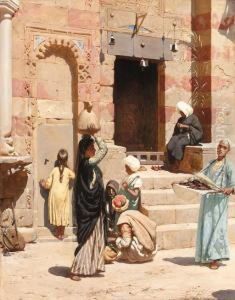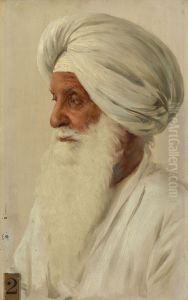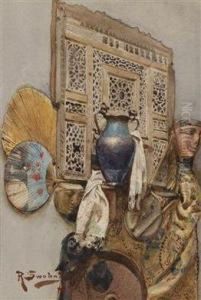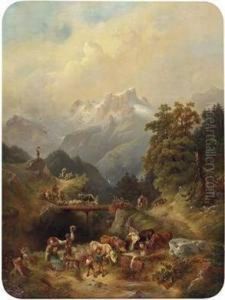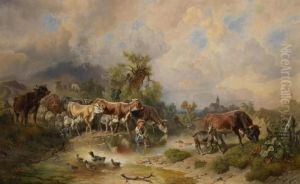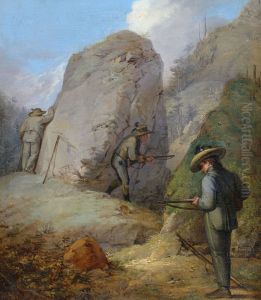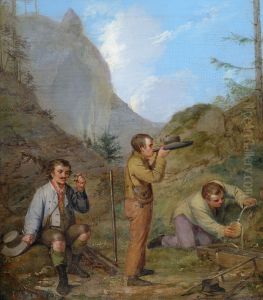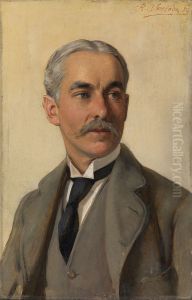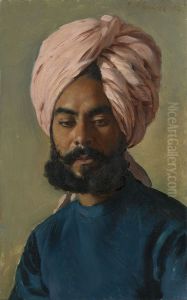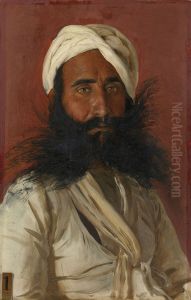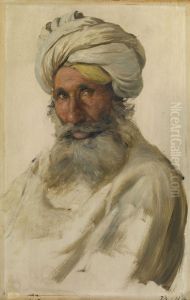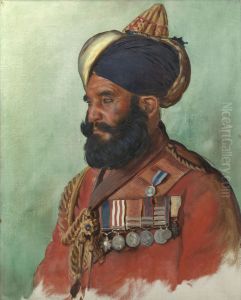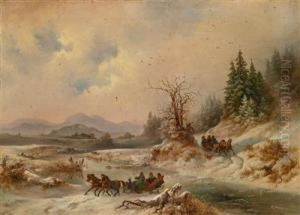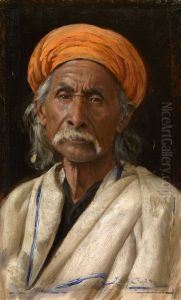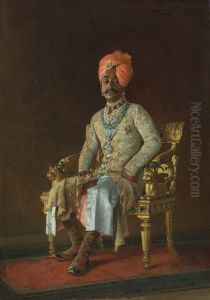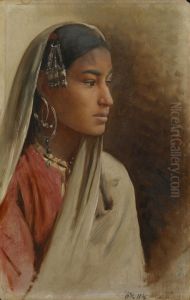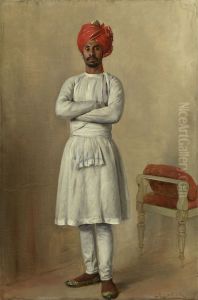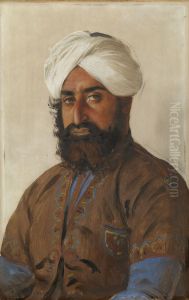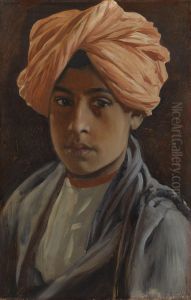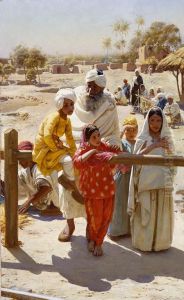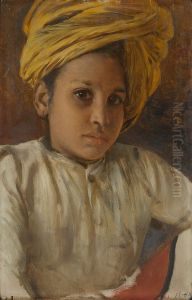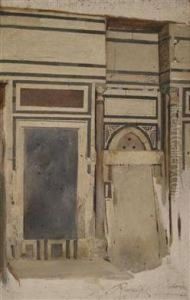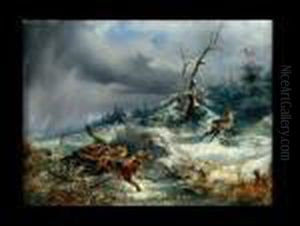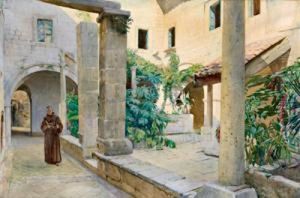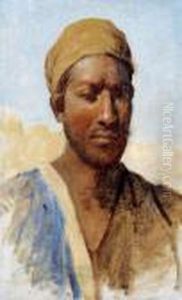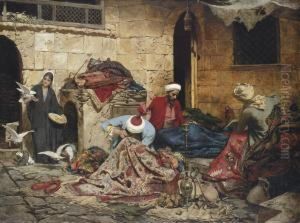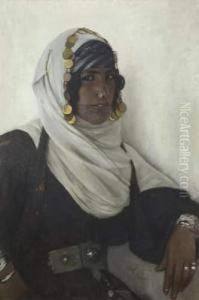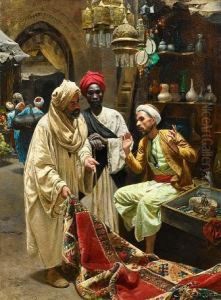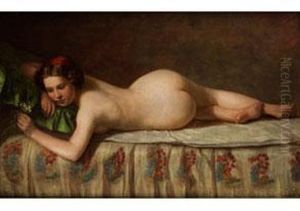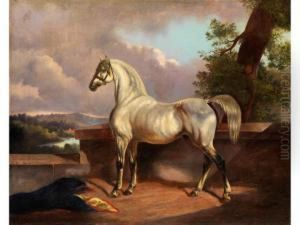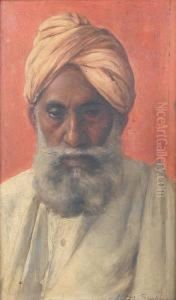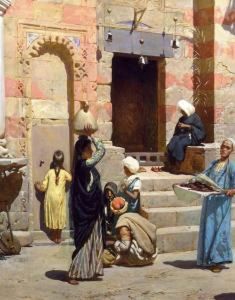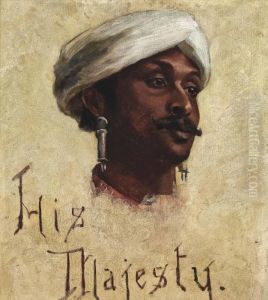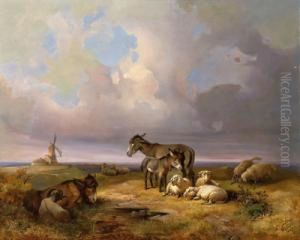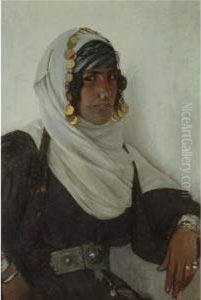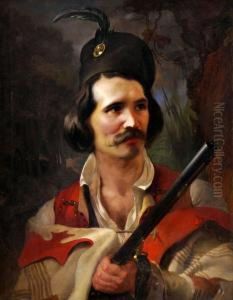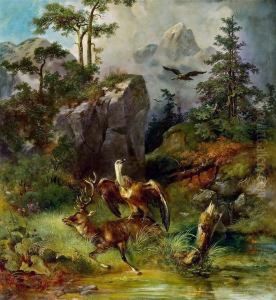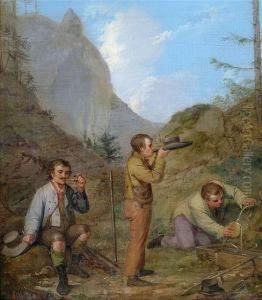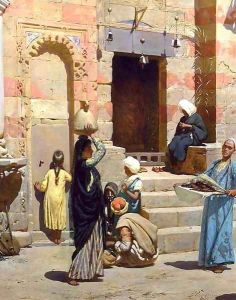Rudolf Swoboda Paintings
Rudolf Swoboda was an Austrian painter, known primarily for his detailed portraits and vibrant depictions of people, often from exotic locales, which he encountered during his travels. Born on September 21, 1859, in Vienna, Austria, into a family with a rich artistic background, Swoboda was destined for a life in the arts. His uncle, Eduard Swoboda, was also a painter, and young Rudolf was exposed to the world of painting and drawing from an early age. He studied at the Academy of Fine Arts in Vienna, where he honed his skills and developed a keen interest in portraiture and ethnographic studies.
Swoboda's career took a significant turn when he attracted the attention of Queen Victoria of the United Kingdom. The queen was impressed by his talent for capturing the likeness and personality of his subjects. In the 1880s, she commissioned him to travel to India and other parts of the British Empire to paint portraits of people from various cultures within the empire. These commissions were part of Queen Victoria's wider interest in the lives of her subjects and her desire to create a visual record of the diverse peoples under her rule. Swoboda's work during this period was marked by a meticulous attention to detail, vibrant colors, and a deep respect for the individuals he painted.
His travels and the works he produced during his commissions contributed significantly to his reputation. Swoboda's portraits were not just mere representations; they were imbued with the personality and essence of the subjects, offering a window into the lives of people from different cultures at a time when such encounters were rare for most Europeans. After his royal commissions, Swoboda continued to travel and paint, though he always maintained a base in Vienna. He exhibited his works in various exhibitions and was recognized for his contributions to portrait painting and his unique ability to capture the essence of his subjects.
Rudolf Swoboda's legacy is not just in the beautiful and detailed portraits he left behind but also in his contribution to the broader understanding of cultural diversity and mutual respect. He died on November 9, 1914, in Vienna, leaving behind a body of work that continues to be appreciated for its artistic quality and its historical significance in bridging cultures through art.
